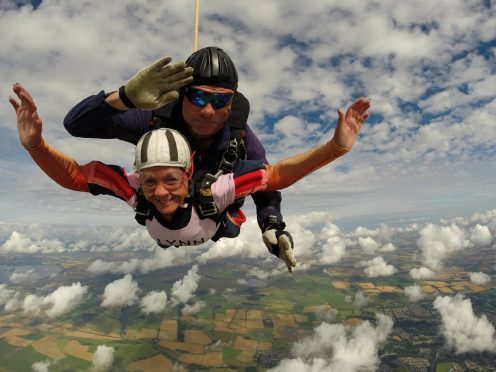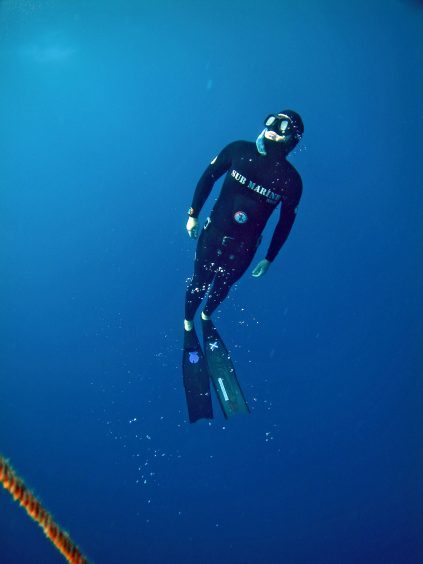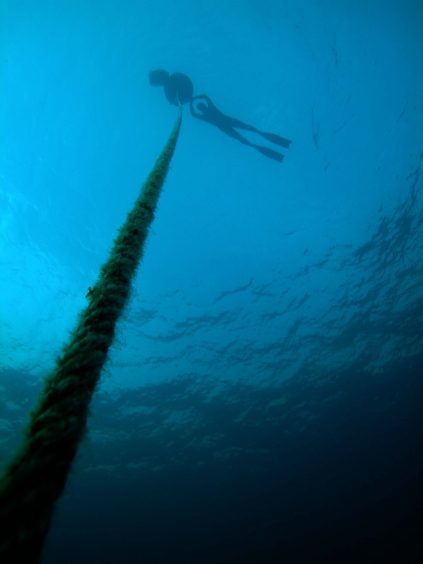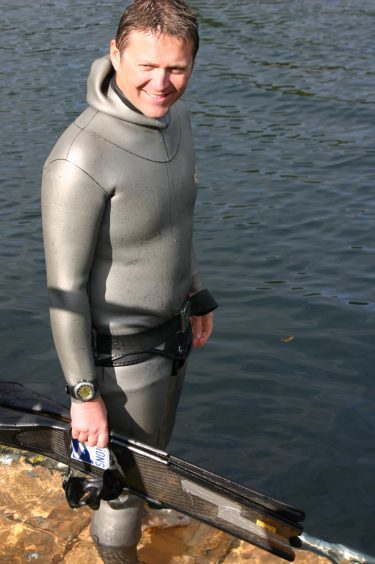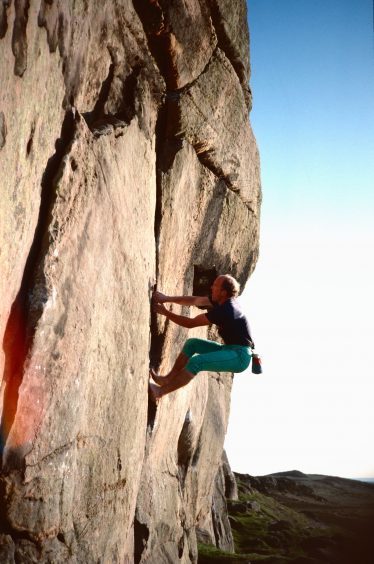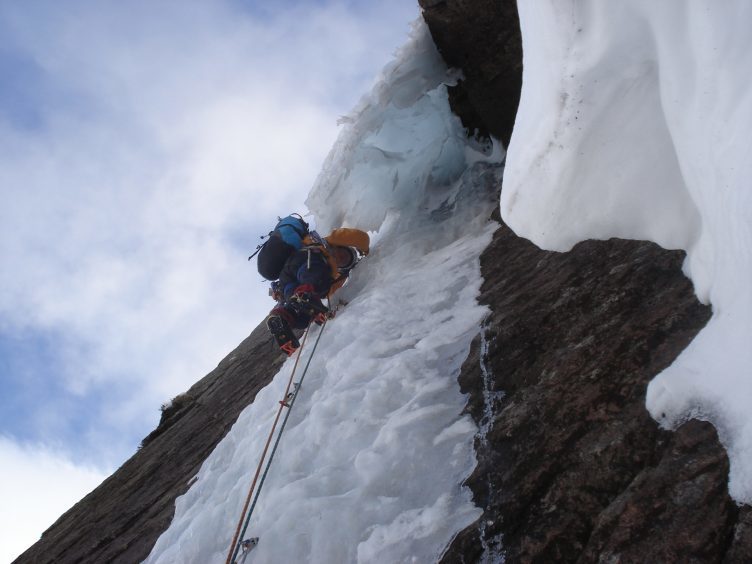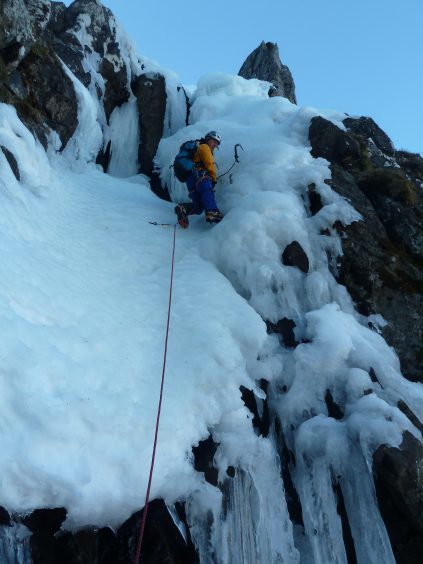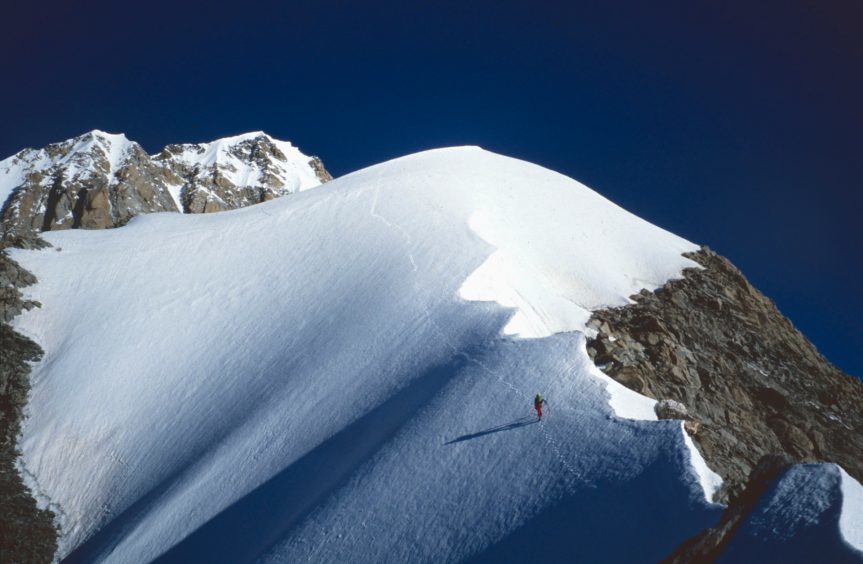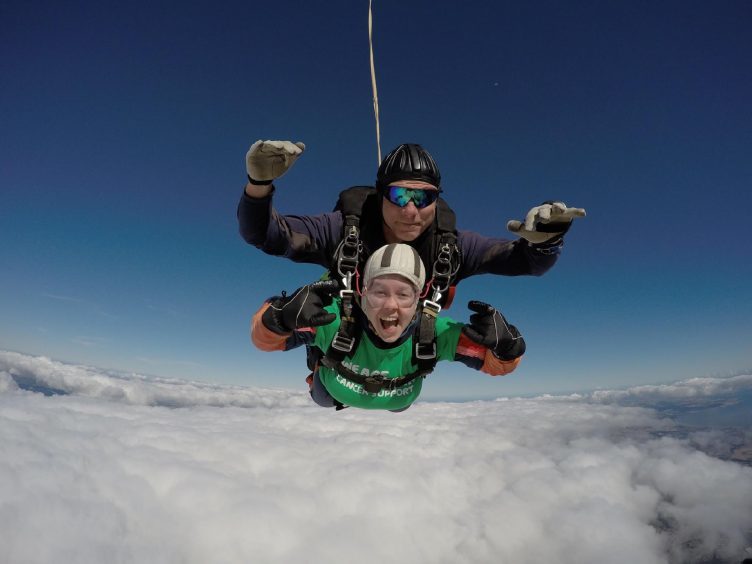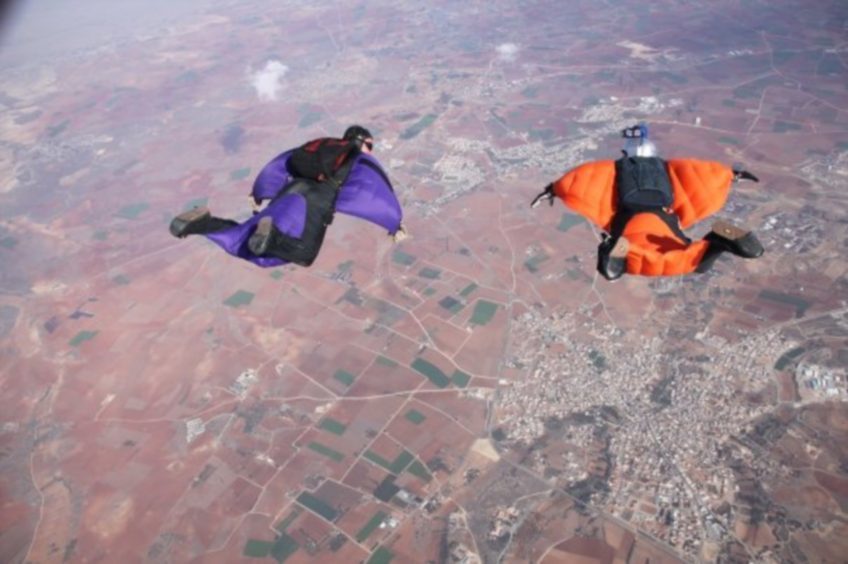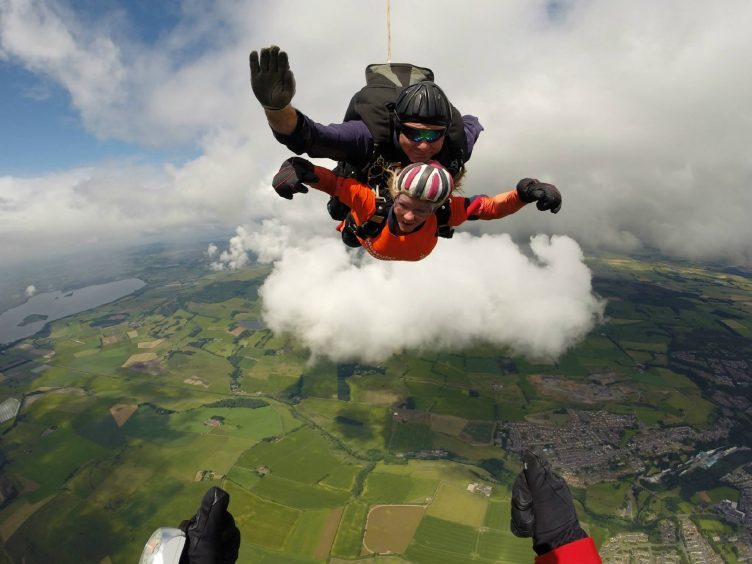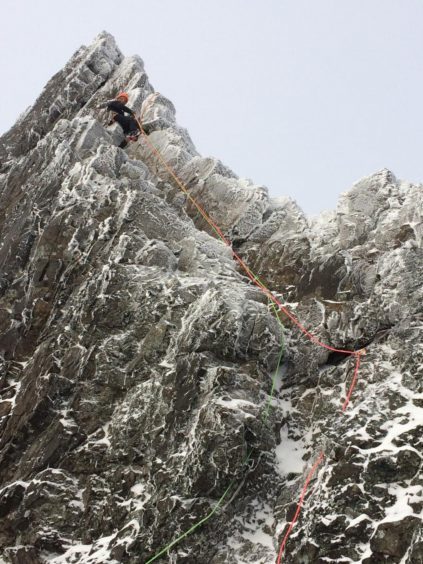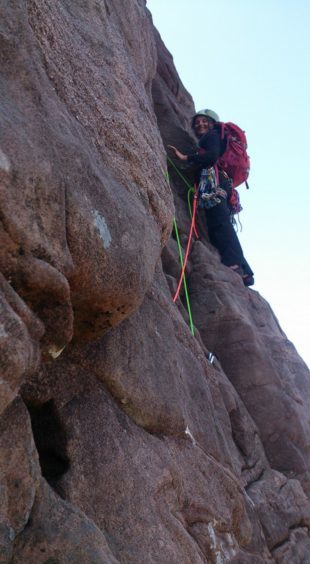Made any resolutions for 2018? Fancy taking up an extreme sport? Gayle Ritchie takes inspiration from Courier Country thrill seekers…
ANDY LAURIE – FREEDIVING INSTRUCTOR
Take a deep breath. How long until the urge to gasp for air becomes overwhelming? Thirty seconds? Less?
Step forward Andy Laurie. As an experienced freediver, he can hold his breath underwater for minutes at a time.
“I first tried freediving in 1999 after watching my friend try it in a pool,” says the 43-year-old. “I was on the surface watching him swim underneath me and realised I’d been holding my breath the whole of his 33m length.
“I bought my own mask and fins, became qualified and set up what’s now the UK’s largest freediving club.”
Amazingly, Andy has freedived to a staggering 60m and held his breath for just under six minutes.
“As soon as you put your head underwater and hold your breath, you’re freediving!” he beams.
“Relaxation is key – not lungsize! It’s simply being underwater with little or no equipment.”
Dad-of-two Andy from Aberfeldy was one of the first instructors in the UK in 2001 and has set up freedive schools in Egypt, Honduras, Thailand and in 2015, Scotland’s very own Alba Freedivers.
His scariest moment was in 2007 when he was a safety diver for Austrian freediver Herbert Nitsch’s 702ft world record dive.
“There were a lot of unknowns but my crew and I did everything as planned and Herbert made the dive surfacing as No Limits World Record holder. What a dive!”
Andy’s most exhilarating experience was on his way to a dive site in the Indian Ocean when he and his wife slipped into the water with a massive 400-plus pod of dolphins.
“I took a deep breath and went down to about 33ft. There were so many dolphins I could hardly see the surface and I realised I was freediving in the middle of them. I was part of the pod!”
Andy, an audio/visual installation project manager, has freedived wrecks worldwide and with many different animals, but sharks are his favourite and his dream is to freedive with great whites.
So why choose freediving? For Andy, it’s about enjoying the silence of being underwater, seeing amazing flora and fauna, and interacting with sea life, whether dolphins, sharks or whales.
Like all extreme sports, there are risks, but Andy reckons they are avoidable.
“People talk about blackouts but in 18 years, I’ve never blacked out, nor have any of my students.
“Like anything, if you push yourself too soon without training, you may experience difficulties. You need time to learn, practice and adapt.
“Only a freediver knows the feeling of incredible relaxation; being able to enjoy the beautiful oceans, the health benefits, and the ability to breathe correctly which is important for all aspects of our lives.”
SIMON JENKINS – MOUNTAIN GUIDE
With 30 years of mountain guiding under his belt, Simon Jenkins knows a thing or two about climbing.
He’s taught everything from navigation to rock climbing and taken group trips up major peaks like the Matterhorn and Mont Blanc, as well as Scotland’s Munros.
In 2003, Simon moved from the Highlands to Dundee to set up and manage Avertical World, Tayside’s only dedicated indoor climbing centre.
“There are so many sides to climbing; I love the variety,” says the dad-of-two.
“You can be out in all sorts of environments – in woods with steep cliffs, near villages, or you might take a remote walk into the mountains and not see a soul for days.
“I steer away from popular peaks – Mont Blanc in summer is a no-no because it’s too busy.”
Simon is a big fan of ice climbing, listing Labryinth Direct and Corrie Fee in the Cairngorms, and “Just an Illusion”, an ice wall in the Southern Alps, as favourite expeditions.
“The magic thing about climbing ice is that it will disappear, then rebuild and reform into something entirely different,” he says.
He’s “enjoyed” barefoot soloing (climbing without ropes – eek!), which is probably the most dangerous form of climbing, but reasons that sometimes it’s quicker and easier to scale a mountain that way.
Simon’s most challenging experience was doing a charity climb of all the Alps that reach over 4,000m in 1993.
He and a friend beat the world record by doing 75 peaks without mechanised transport in 52 days.
“We had to make judgements by looking at snow, glacier and avalanche risks, as well as coping with rock falls and bad weather – and the climbing itself.
“You always have to assess risks and turn back if need be.”
The route up the Walker Spur on the North Face of the Grandes Jorasses in France – a dream for alpinists – was another highlight of Simon’s climbing career.
“Ultimately, I love the combination of doing something physical outdoors – something which challenges me mentally and physically – and making it safe.
“There are dozens of climbs I’d like to do but if you get too transfixed on one goal, that’s when judgement can be called into question.
“You have to be able to say no and remember the mountains will always be there.”
IAIN ANDERSON – SKYDIVING INSTRUCTOR
Throwing yourself out of a plane several thousand feet above the ground goes against all our survival instincts – it’s a scary thing to do.
But many people dream of skydiving, whether for charity or simply because it’s on their bucket lists.
Those who do it talk of the thrill and sense of achievement and the more jumps they do, the more their confidence grows and enjoyment levels soar.
There are many ways to get into skydiving, but most folk start with a tandem skydive, which instructor Iain Anderson describes as the “fairground ride” of the sport.
“The instructor does all the work and it’s accessible to most people,” says Iain, 46, who works at Skydive St Andrews.
A step up from tandem is “static line” parachuting where you exit the aircraft, jump solo and the parachute opens for you automatically and the descent is slowed down.
An alternative, and more thrilling method is “accelerated freefall”, which does what it says on the tin – you fall rapidly towards the earth for perhaps 60 seconds under the supervision of two instructors, and you deploy the parachute yourself.
There’s also wingsuit flying – the sport of gliding through the air using a wingsuit – which daredevil Iain has of course tried.
Iain, who was an infantry soldier with the Black Watch, changed career to become a military parachute instructor, which also involved performing
death-defying parachute displays worldwide.
These days, as well as taking people on tandem skydives, he assesses and qualifies potential instructors on behalf of the British Parachute Association.
“I don’t go out getting smashed on drugs and drink – I get my kicks from adrenalin. And I get a huge buzz taking people out and seeing them go from hero to zero.
“Do I ever feel scared? Yes of course, if I’m doing a display somewhere new, if the area is tighter or there are more hazards.”
Things have gone wrong on occasion – Iain’s parachute hasn’t operated correctly or he’s had to use the reserve.
“There are risks with everything but safety is priority,” he says. “If you’re thinking about doing a skydive, just do it.”
DANIELA BALSLEV – CLIMBER
A member of Dundee Mountain Club, Daniela Balslev, 43, describes herself as a “beginner winter climber”, although photographs show her tackling some pretty serious ridges.
“I love to climb, both on rock and ice,” she says.
“Difficulties finding suitable climbing partners within a relatively closed, male-dominated community have pushed me to solo some routes.
“I don’t do this by choice, and consider it a last resort, but I’m more relaxed about it these days.”
Before undertaking any adventure, she checks weather forecasts, reads guidebooks, speaks to experienced climbers and “interviews” potential climbing partners.
“I’m extremely risk averse, and this is my way of coping with fear. The beauty of the mountain is a reward that makes all this risk and effort worthwhile.”
Daniela, a lecturer in psychology and neuroscience at St Andrews University, recently started combining climbing with other sports like off-piste skiing.
“The fast, exhilarating descent on skis complements the focused and careful ascent of the climber,” she muses. Another dream is to scale underwater cliffs while scuba diving.
info
Want to get into climbing? Contact www.dundeemountain.club or book in for a session at Avertical World, www.averticalworld.co.uk
Fancy freediving? Get in touch with Andy Laurie via email: albafreedivers@gmail.com
How about skydiving? See www.skydivestandrews.co.uk
